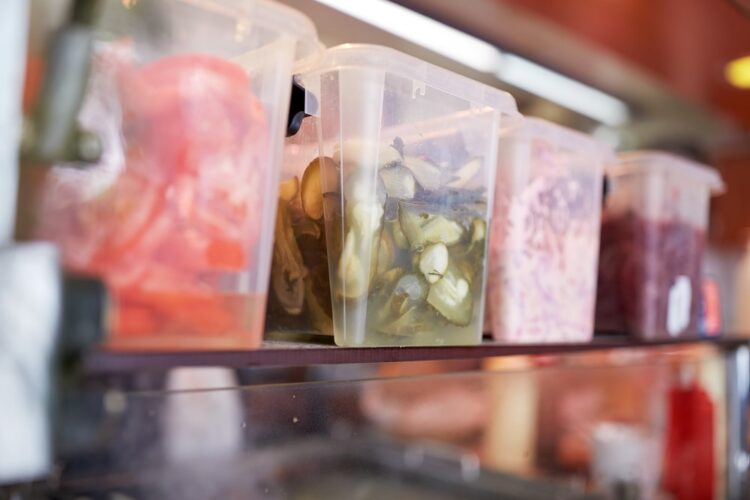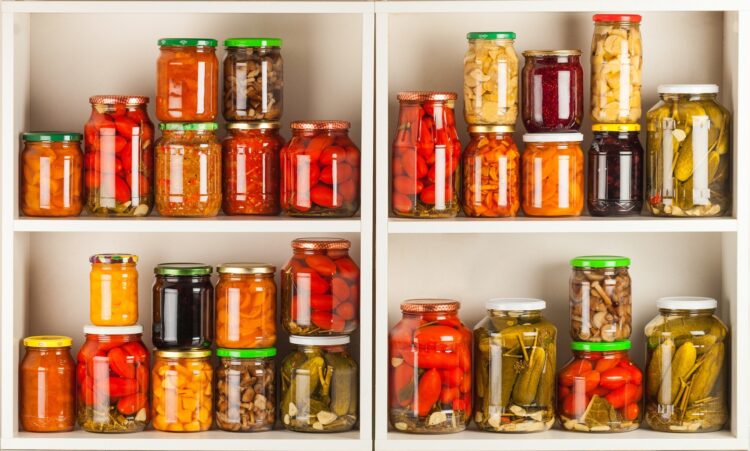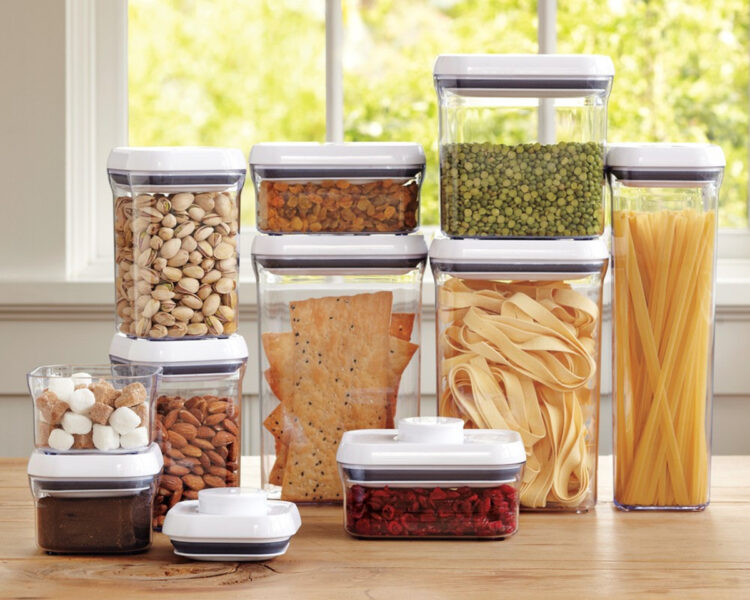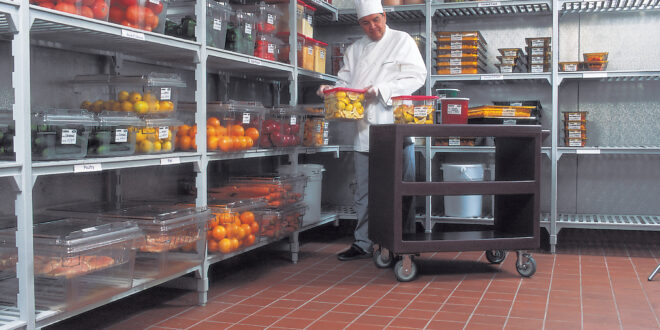Managing a restaurant involves syncing hundreds of processes to ensure everything runs smoothly, like cogs in a well-oiled machine. As any restaurateur knows, the quality and freshness of the food they serve are reflective in the level of the customer’s satisfaction and crucial for the continuity of their business. Choosing the right storage solutions for your business maximizes freshness while preventing bacteria and cross-contamination with other foods or pests.
As every restaurateur knows, all commercial kitchens are under obligation to comply with strict hygiene standards to guard against the ever-present risk of food poisoning. Severe penalties can be imposed on kitchens for non-compliance, and in some cases, forced closures do occur.
With almost 100,000 places to eat in Australia as of 2019, there is significant pressure on restaurant owners to provide a healthy and hygienic dining experience for all customers. At a time when 90% of guests check restaurant reviews before dining in a restaurant, maintaining a flawless track record is imperative. With the speed in which news travels on the Web, just one hygiene incident is enough to severely damage a reputation that may have taken years to build.
This guide is intended to help you select the right storage solutions for your commercial kitchen designed to keep food fresh and free from contaminants. If you’re setting up, relocating or renovating your restaurant kitchen, we recommend you check the commercial kitchen equipment essentials guide by Norris, an extensive equipment list that every restaurateur should keep handy.
Low-Cost Storage Solutions You Need to Avoid

In any business, it is tempting to cut costs to increase profits. However, although purchasing a low-cost item may save you money in the short-term, often, in the long run, compromising on quality can end up costing you a lot more.
Here are some reasons why you should avoid inferior products;
- Lids are not airtight, which can reduce the shelf, it’s freshness, taste, and even lead to contamination, leading to an increased risk of food poisoning.
- Cheap bins and containers are manufactured from less durable materials, leaving them open to crack easily, causing leaks and spills.
- Cheaper plastic containers can contain BPA, an industrial chemical that has been restricted globally due to its hazardous health effects.
- Although they cost more, stainless steel and polypropylene containers are BPA-free and meet the highest safety requirements.
Best Storage Ideas for Each Food Type
Every food has different chemical properties that determine its shelf life; for this very reason, two different types are not stored together. To this end, storage containers are purpose-built to store certain foods and designed to reduce the risk of bacteria build-up while keeping it fresher for longer. When shopping for storage containers, make sure they are FSANZ compliant.

-
Ingredient Bins
Ingredient bins are the right storage option for loose ingredients such as flour, sugar, rice, and other grains. Since these ingredients can become easily contaminated, ingredient bins have airtight lids that keep out pests and maintain the right moisture level, thus preventing bacteria build-up. Ingredient bins have wheels for easy transport of large ingredient quantities.
-
Storage Container Types
Storage containers are available in a wide variety of shapes, sizes, and materials. Because most freezers and storage units have standard sizes, storage container sizes are also standard, ranging from 2-cup to as much as 22-quart. Ideally, containers should be filled at maximum capacity because air pockets can cause a temperature imbalance. For convenience, storage containers are often stackable to maximize space savings.
Pay special attention to the material used as containers made from polycarbonate can withstand temperatures from -4 degrees Celsius to 98 degrees Celsius, enabling you to place them in the freeze or store hot meals in them.
Many restaurant managers prefer transparent containers because they can easily see what’s inside without having to open the lid and risk unnecessary air exposure. Graded containers are also another useful addition to any commercial kitchen as they help with measuring servings and monitoring your stock.

-
Preserving Jars
More popular in residential kitchens than commercial ones, preserving jars allow you to store food such as biscuits and sweets, and at the same time, they add a nice touch to the restaurant’s décor. One warning, however: the rubber rings around the jar’s head will wear out in time, so don’t forget to replace them regularly.
-
Air-Tight Clip-Lock Containers
Although suitable for almost all types, airtight clip-lock containers are designed for foods more easily susceptible to contamination or which have a high risk of spillage. For example, you should keep dry fruits in airtight containers because contact with air can lead to a loss of flavor and make them harder to eat. Use airtight containers for spices so that they don’t end mixing with other ingredients or contaminating your cooking area.
After you have all your kitchen storage get some personalized glasses from personalizedbykate.com for your decor.
Choosing the Right Storage Shelving and Trolleys
The strategic placement of shelving around your kitchen is crucial to the smooth operations of your kitchen. Choosing the right shelving solutions and trolley storage maximizes space while easing the burden of transporting ingredients in and around the kitchen without the risk of spillage and contamination.
Durability is the primary consideration when choosing commercial-grade kitchen shelves as the kitchen environment can be harsh, often prone to hard knocks and substantial storage requirements. Steel shelving and trolleys are preferable to plastic due to their durability and strength.
To increase the safety of your restaurant operation, choose shelves pre-coated with an antibacterial agent. Naturally, you will still need to clean them regularly with an antibacterial solution, but the coating will reduce the risk of contamination even more.
Everything Your Restaurant Needs to Know about Refrigeration, Temperature Control, and Stock Rotation

Knowing how to use your commercial refrigerator and currently set and monitor freezer and refrigerator temperatures are essential to longevity:
- Check your freezer and refrigeration temperatures daily. The maximum temperature for freezers is -17° C and for refrigerators, between 0° and 4° C.
- Always keep cooked and ready to eat food on the top shelves of the refrigerator, stored inside the appropriate containers.
- The last three shelves in the refrigerator are for raw and uncooked foods. Raw meat should stay on the bottom shelf to reduce the risk of contamination. Uncooked meat must be kept in airtight containers.
- Fruits, vegetables, and salads should require washing before refrigeration and stored in the salad drawer.
- Avoid overstocking the refrigerator as it can hinder air circulation and favor bacterial growth.
In addition to managing refrigeration temperatures, temperatures in pantries and storage racks should also be monitored. Foods such as flour, pasta, and cereal should be stored in a cool, dry place, away from direct sunlight, while keeping humidity levels below 15 degrees. Air conditioning and hygrometers can help preserve the right storage conditions in your commercial kitchen, considering installing sensors to alert you when temperatures rise or fall outside recommended limits.

You should always have an unbroken cold chain for foods in your commercial kitchen. When the chain is interrupted, you should discard the affected foods. For example, if a staff member forgot a package of raw ground meat on the counter or there was a power failure, it’s best to throw those away and clean the surfaces they come in contact with rather than returning them to the freezer and poisoning risks.
Last, but not least, to eliminate all risk of poisoning and safety incidents, your restaurant should follow strict stock rotation rules. More specifically, the FIFO rule: first in, first out. When receiving deliveries, correct placement and rotation ensure old stocks get used first, and you don’t risk using expired ingredients. Consider also labeling all storage containers with a use-by date.
Conclusion
Whether your running a restaurant, bar or cafe, setting hygiene and storage rules is crucial for maintaining safety, freshness, and taste. Investing in the right storage containers and setting clear food safety guidelines is the best way to ensure customer safety and satisfaction.
 Hi Boox Popular Magazine 2024
Hi Boox Popular Magazine 2024



